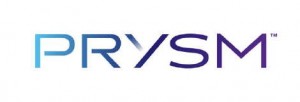We’ve just learned that San Jose, California-based Prysm [1] has raised an additional $100 million in equity funding, bringing its total raised financing to $135 million.
 [2]This latest round of funding comes Partech International [3] and Artiman Ventures [4] along with several global anonymous investors.
[2]This latest round of funding comes Partech International [3] and Artiman Ventures [4] along with several global anonymous investors.
This round allows Prysm to start volume production of its displays as well as build a 150-member global support team. Amit Jain, founder and CEO of Prysm says in a released statement that the funds will be used in part to train personal and support Prysm operations in 11 major worldwide markets.
Prysm, formally Spudnik [5], started demonstrating its large venue displays in 2010. The technology uses laser diodes and a surface-emissive phosphor panel in an affair much like that of a laser printer. Once directed by a mirror, the laser turns the phosphorus red, blue or green thus producing a flicker-free image that’s also void of motion blur.
Prysm has built the LPD technology into panels that can be combined to produce a massive display. Energy-efficient, an 80” screen only uses 100 watts; a large 225” display, the company claims, ‘uses less energy than a hair dryer’ – an amount is less than a third of today’s conventional displays.
Prysm’s displays have been adopted by leading brands including American Eagle Outfitters and People’s United Bank in Boston [6], as well as by broadcast studios CNBC’s Mad Money with Jim Cramer and Dubai Sports TV [7].
The LPD technology empowers companies to create powerful brand messages through life-like, life-size visual experiences, customisable for any environment. Prysm’s LPD tiles allow the creation of immersive, large scale video-displays that fit environments of any size and any shape, and are viewable from any angle. The technology also supports a full range of audience engagement solutions including touch, gesture and proximity detection.
Despite the big claims of its groundbreaking technology, Prysm admits that will be paddling against the display adoption current for a while, but at least now has the financial backing to begin achieving its goals.